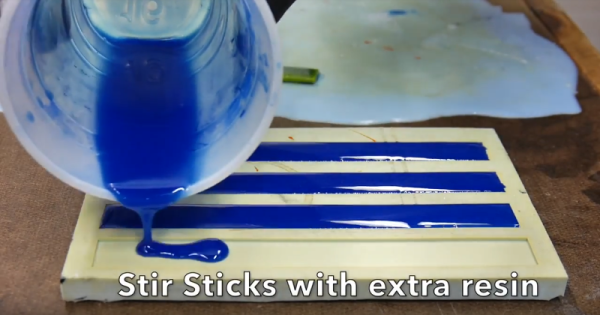When it comes to resin casting, time is of the essence. It helps to gather everything you’ll need and have it within reach before starting. But if you don’t know what you don’t know, it can be difficult to anticipate needs. Luckily, [Botzen Design] has a few tricks up his sleeve that will save time, materials, and sanity for novices and old hands alike.
It may seem somewhat obvious to mix up resin in a disposable or reusable plastic cup. But not all cups are created equal. Polypropylene cups won’t outgas into your resin, but polystyrene will. If you use a silicone cup or any polypropylene food container marked #5/PP, cured resin will peel cleanly off of the cup walls.
For some reason, the giant jugs of resin [Botzen Design] uses don’t come with pumps. How do they expect someone to meter out exact amounts of resin and hardener while pouring them out of gallon jugs? Stadium-style condiment pumps at a restaurant supply store make things much simpler while avoiding costly spillage.
Our favorite tip (and seemingly [Botzen Design]’s as well) is the drip hammer. When air bubbles mature into craters, they can be filled easily and precisely with a drop or two of wet resin. A pipette would probably just get clogged, but an icicle of cured resin hanging from a stick makes the perfect drip applicator.
Want to get into resin casting but don’t know where to start? Hackaday’s own [Gerrit] has you more than covered.











